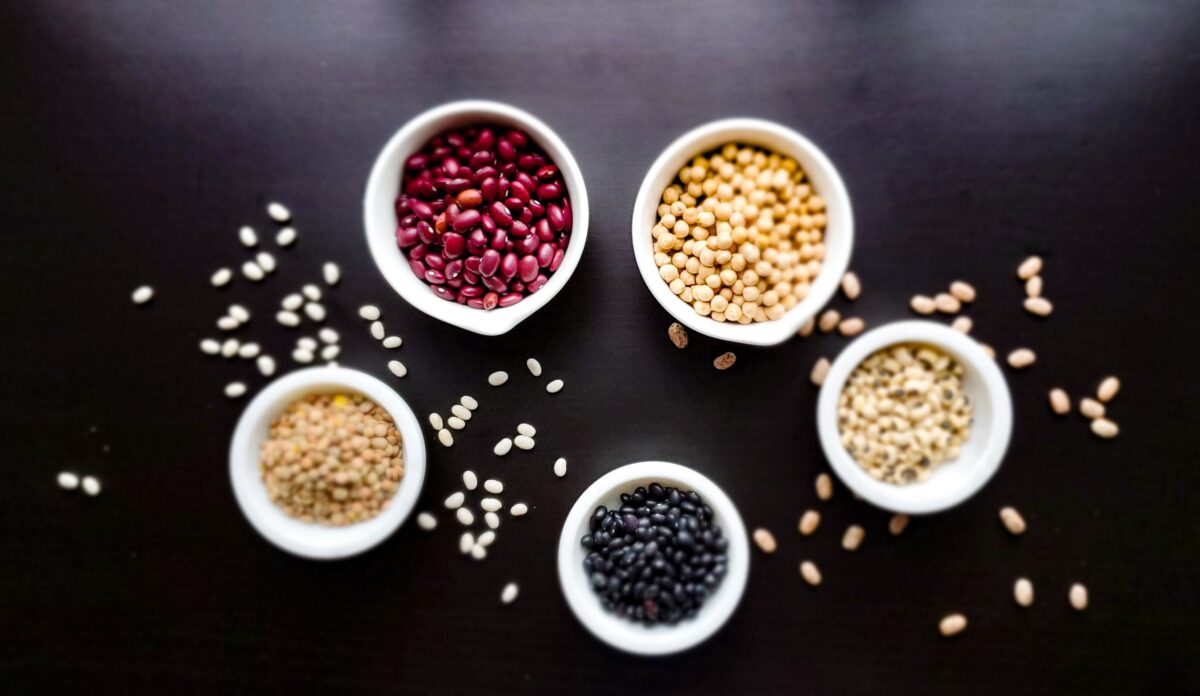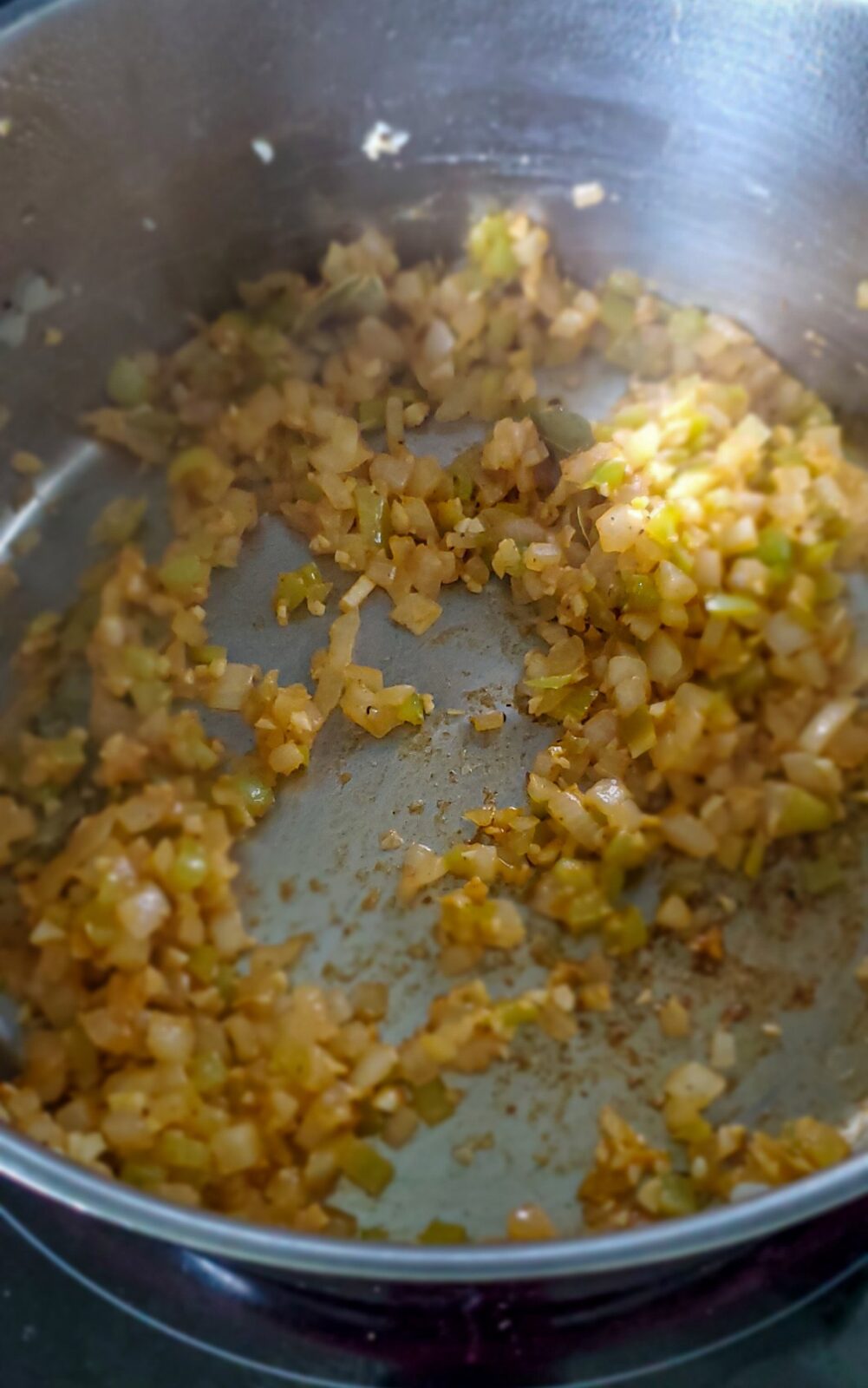Rice's Favorite Accompaniment
Rice and Beans go together like, ham and cheese. And today we learn to make Puerto Rican Red Beans!!! We eat a variety of different legumes or pulses; Black beans, White beans, Black-eyed Peas, Garbanzos, Lentils, Pintos, Pigeon Peas, and Pink beans. But today, we will talk about our most favorite bean, the Red Bean.

Table of contents
The number one bean, but why is that?
So why do we love beans in Puerto Rico? Easy; ease of growth, beans were cultivated long before colonization, and it is the common denominator of all three major races in the island, Taino, African, and Spaniard. The Taino natives used to cultivate beans and eat them fresh from the pods. African slaves brought with them beans they could cultivate like the Black-eyed Pea, and the Spaniards imported Garbanzos and Lentils to fulfill Mediterranean recipes.

Types of beans
Black Beans, I have actually written a post on black beans a little while back. I like black beans just as much as I like red beans, sometimes even more.
Garbanzos. This is another of my favorite legumes. I will write a post dedicated to them, but what I will tell you now is that there are many varieties of garbanzos. They vary in sizes and colors, and in texture.
Lentils. Like garbanzos, lentils also vary in color. These little peas are super tasty, granular in texture, and quite filling.
Gandules, Pigeon Peas. Gandules are our tie for first place in the Puerto Rican gastronomic rank. Almost always cooked mixed with rice, gandules represent celebration and good eats.
All the other colors. So beans color wheel ranges from black to white with the reds and pinks in between. But the color of the beans is not necessarily reflective of their nutritional value.
Sofrito and the connection to our beloved beans
So I also have a whole post on sofrito but I am still going to cover some important facts I have learned since.

In my post, I encourage the use of premade (homemade) sofrito. But if time permits, the tastiest way to make beans is by making sofrito in the pot as you go through the cooking process.
The difference between making sofrito this way and the way I wrote about it in the previous post is that the sofrito is cooked. Cooking the sofrito as you go makes the sofrito into tangible ingredients that are part of the finished product. Because I blend the sofrito in my previous post with my blender, that sofrito turns into a puree that dissolves into the final product. Rendering all its flavor without a trace of the ingredients.
Another ingredient that gives Puerto Rican Red Beans a distinguishable flavor.

Pork. Pork is king when it comes to rendering a flavor profile that sends your tastebuds back home. At least, it does to me probably because I love pork so much. Traditionally we use fatback and ham when we make sofrito. Other options would be smoked ham, pork shanks, or pig's feet. But my most favorite form of pork is BACON. I have found packages of bacon pieces, thick random bits of bacon that are meaty and render great flavor.

How to make Puerto Rican Red Beans
This recipe works great for both canned and dried beans. For directions on how to rehydrate beans click here.
I did not use either fatback or bacon for this recipe. Olive oil was my choice of fat, achiote oil would also work for this recipe.
In a medium saucepan, heat choice of fat. If you choose to use fatback or bacon, you want to render as much fat from the fatback. The fatback will reduce in size and become golden brown. For bacon, you want to slow crisp and cook bacon thoroughly. Adjust if the fatback or bacon is crisping too fast. Both fatback and bacon would stay in the pot through the cooking process.
Once the fat is hot but not smoking, add the onions and cubanelle peppers. Cook by stirring them occasionally until tender and translucent.
Add the garlic, and continue to cook until the garlic is soft and has a light golden color.
Add red beans, broth, tomato sauce, and bay leaf.
Reduce the heat to low and allow to cook covered at a low simmer for about 10 minutes or until beans are tender.
Stir the beans and check for the thickness of the sauce and tenderness of the beans. Add more broth if necessary.
Season with paprika, oregano, cumin, salt, and paper to taste. Cover and cook for another 10 to 15 minutes. Serve beans over rice.
Here are a few notes and tips
Can these beans be made ahead?
Well, yes! I normally make dried beans and when I do I make the entire bag of beans. So I end up with twice or three times as many beans as what I need for that evening. You have a few options here. You can soften all the beans and stew only the amount you need for that evening. Chill the rest of the beans and freeze. I would say, they would be good for at least three months frozen. Or you can stew the entire portion and then chill and freeze the beans you didn't eat that evening.
Separating the beans into what stewing what you are going to eat and not stewing the rest, allows you to use the rest of the beans in a different application like Arroz con Habichuelas, add them to a soup, use them for refried beans, or add them to a salad, chili without having to deal with any extra flavorings and seasonings.
Always pre-soak, when possible
When I made this recipe, I had forgotten to pre-soak. Pre-soaking takes away a couple of hours of cooking. Without pre-soaking I took the beans, removed the broken and undesirable beans. Rinsed the beans and added them to my largest pot. Then I covered the beans with 4 quarts of water and began to boil. The beans had to cook for about 3 hours to get them to soften.
If I had soaked the beans overnight, the beans would have double size while I slept. Pre-soaked beans take about an hour to soften. From which at this point they can be easily stewed.
For the sheer amount of beans, I decided to cook, I would have probably needed the bigger pot to soak the beans. But by all means, do not use the entire bag if you do not want to. I do, only because I will freeze them once cooked and use them at a later time. I also, do not feel like going through all this process so many times in a week or even once a week, so I do it all at once.
Related posts
- Three simple ways to cook our world-loved easy white rice
- Carne Frita, Pork Version
- The Mighty Puerto Rican Pork Chop
Latest posts
- Caldo Gallego, Galician Broth
- Puerto Rican Arroz con Pollo, Chicken and Rice
- Mojo Marinade
- Arroz con Dulce, Puerto Rican Rice Pudding
- Favorite Coquito Recipe
- Budín de Pan (Puerto Rican Bread Pudding)
📖 Recipe

Stewed Red Beans
Ingredients
- 2 pieces of fatback fat or bacon small diced (optional)
- 1 tablespoon of olive oil
- 1 onion peeled and diced
- 1 cubanelle pepper diced and deseeded.
- 1 clove garlic peeled and minced
- 2 tablespoons of sofrito
- 1 can of small red beans or 2 cups of rehydrated beans
- 32 ounces of broth use as needed.
- 1 can of tomato sauce
- 2 bay leaf
- ¼ teaspoon paprika
- ¼ oregano
- ¼ cumin
- salt and pepper to taste
Instructions
- In a medium saucepan, heat the choice of fat at medium heat.
- Once the fat is hot but not smoking, add the onions and cubanelle peppers. Cook the veggies, stirring them occasionally until tender and translucent.
- Add the garlic, and continue to cook until the garlic is soft and has a light golden color.
- Add red beans, broth, tomato sauce, and bay leaf.
- Reduce the heat to low, cover, and allow beans to cook at a low simmer for about 10 minutes.
- Stir the beans and check for the thickness of the sauce and doneness of the beans. Add broth if necessary to adjust thickness.
- Season with paprika, oregano, cumin, salt, and paper. Cover and cook for another 10 to 15 minutes.
- Serve beans over rice.
Notes
- I did not use either fatback or bacon for this recipe. Olive oil was my choice of fat. Achiote oil would also work in this recipe.
- If you choose to use fatback or bacon, you want to render as much fat from the fatback. The fatback will reduce in size and become golden brown.
- For bacon, you want to slow crisp and cook bacon thoroughly.
- Cook both fatback or bacon in low to medium heat, adjust heat to keep from burning. Both fatback and bacon would stay in the pot through the cooking process.
- I normally skip the pork fat. Only because I am trying to eat cleaner, but every now and then I use 2 strips of bacon for that smokey flavor.
- If using canned beans, remember, canned beans are already cooked, you do not need to cook them as long.
- Cubanelle peppers are great for this application. They render great flavor while almost disappearing into the final product.








Comments
No Comments